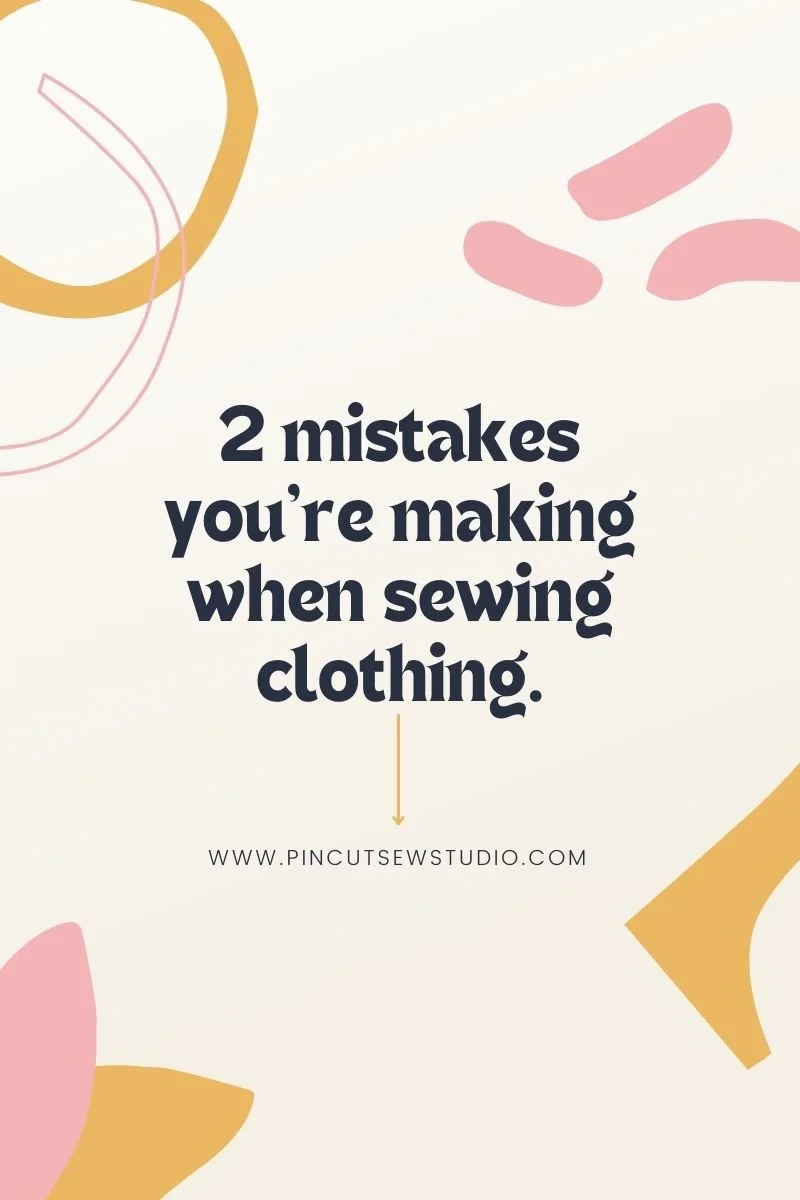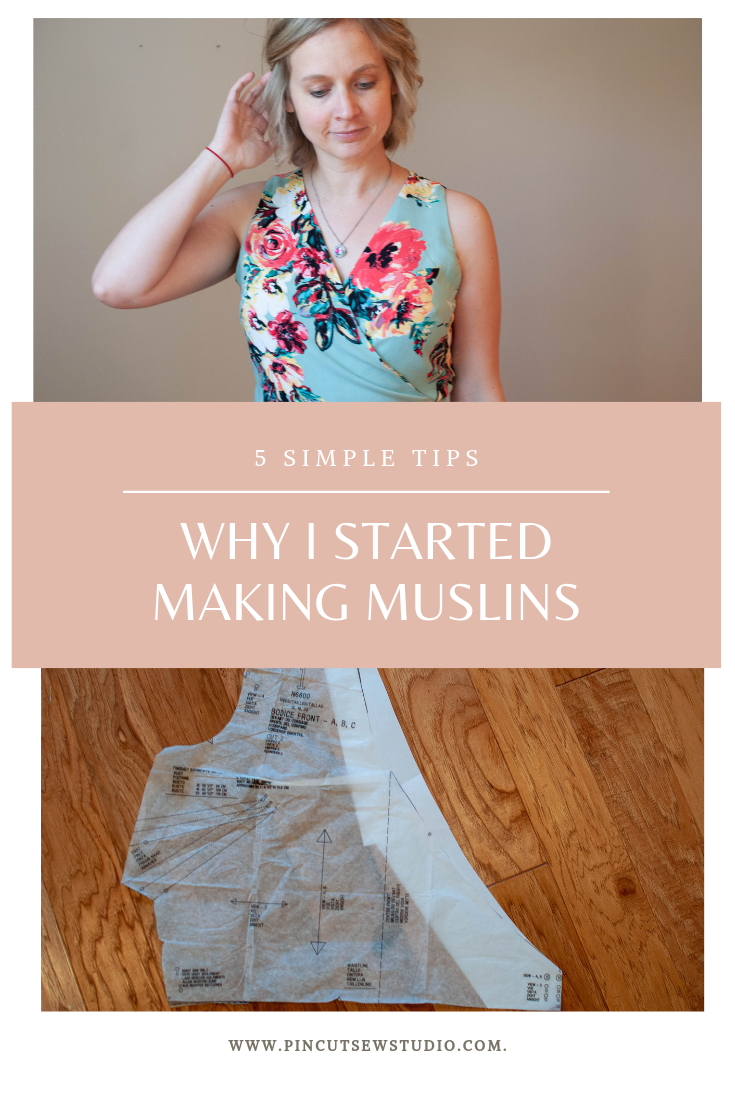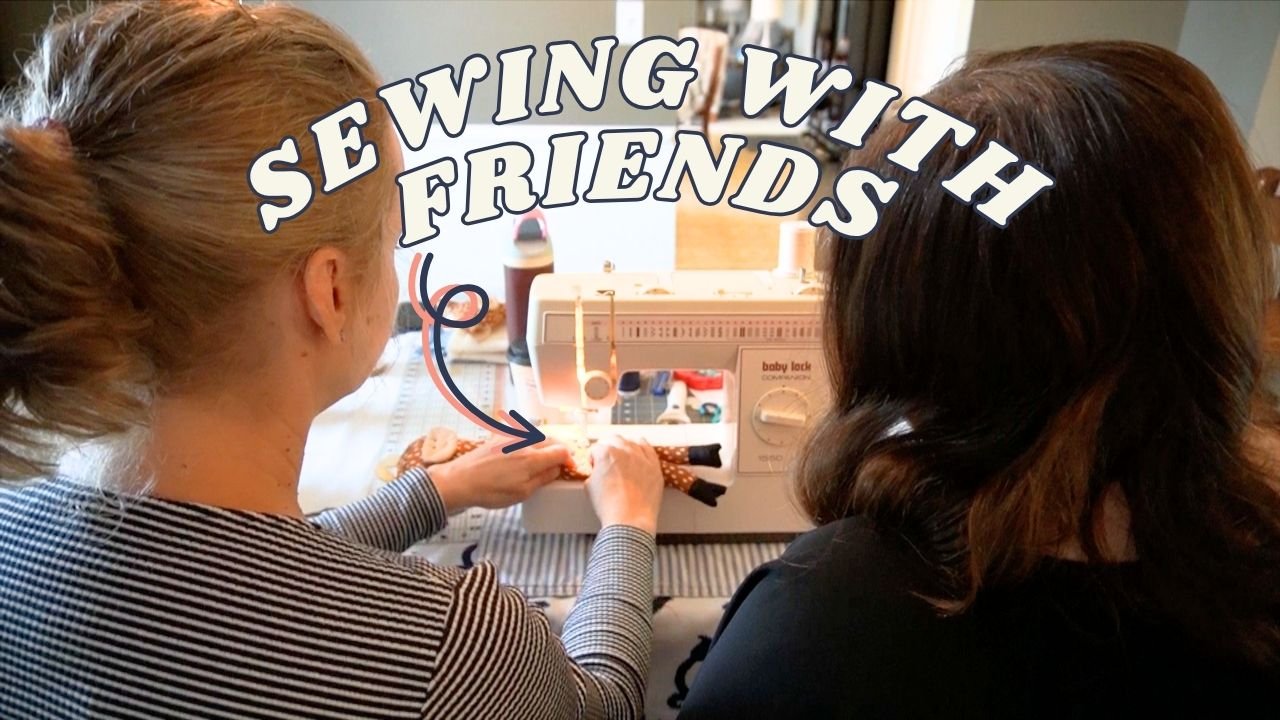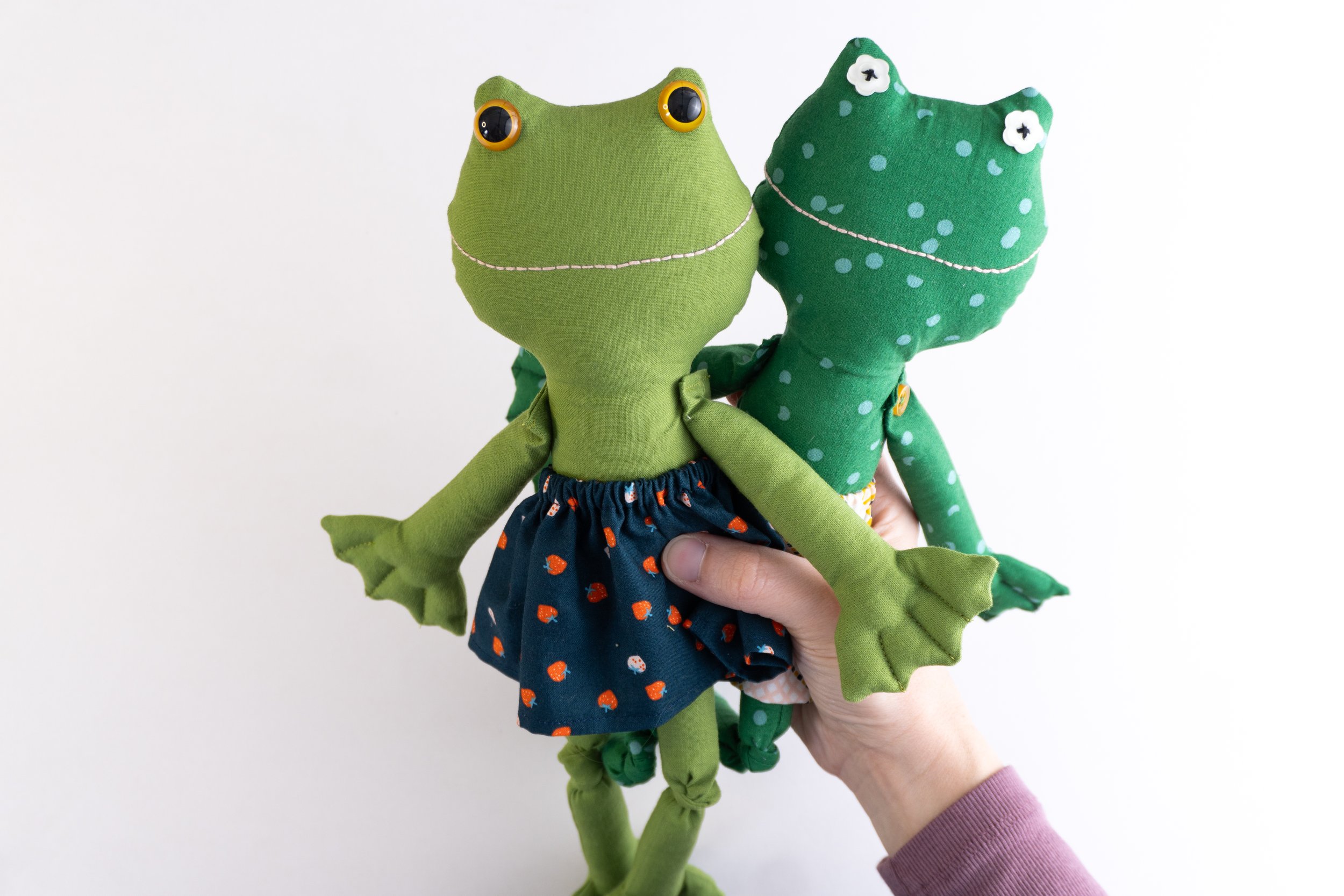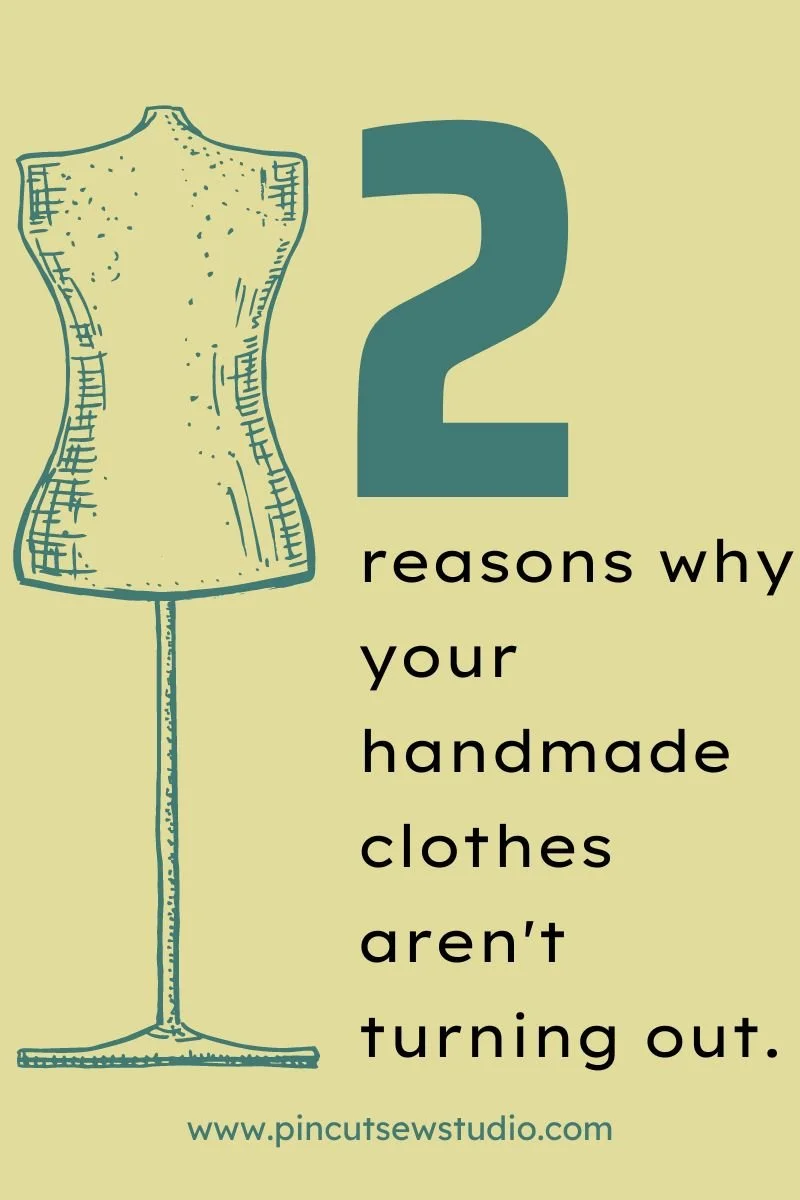2 Reasons Why Your Handmade Clothes Aren't Turning Out
Are you someone who has been sewing clothing and finding that your clothes just aren’t turning out how you wanted them to? Maybe they’re wearable, but just don’t look good on you, or maybe they actually turned out beautifully, but you find them languishing in the back of your closet, never being worn and you wonder why it is you don’t like it.
If that’s you, I have two big tips for you today so that you can start making garments you’ll actually be able to wear! If you’re making one of these mistakes in your sewing life, this post is sure to improve your success rate. Promise.
Watch the video or scroll past it if you’re more of a reader :)
Why Aren’t Your Handmade Clothes Turning Out?
You’re not making muslins.
Toile, mock-up, muslin, whatever you call it where you live, this just refers to a practice garment that you make before you make the actual garment with your nice fabric that you spent nice money on, in order to get the fit right and make sure you like the silhouette of whatever it is you’re about to make.
If you’ve seen the movie Mrs. Harris goes to Paris (you should, it’s an amazing movie, I’ve seen it twice and the fashions are drool-worthy), but anyway, you remember the part where she’s invited to go behind the scenes of Dior, into the sewing room, and there are dress forms fitted with all kinds of barely off white garments? Those are muslins. Muslin is just an inexpensive cotton fabric that is used specifically for this purpose. A muslin doesn’t have to be made out of actual muslin fabric, and they’re called various things in other parts of the world. But here, I’m gonna just keep calling them muslins.
Making a muslin takes a lot of extra time, but I can tell you from personal experience, that it will SAVE you both time and money in the end. It will save you time because you’ll end up with a piece of clothing you’ll actually like and wear, rather than spending your time making something you have to toss because it doesn’t fit and can’t be fixed. And it saves money for obvious reasons — you won’t make something unwearable out of nice fabric.
SO, I’ve written an entire article on making muslins, but if you find yourself saying, “nah, no way, that’s too much work, not gonna do it,” let me put you at ease. Making a muslin can be quick and it can be cheap. You don’t need to spend much at all on the fabric itself. Don’t go buy a bolt of muslin fabric unless you want to. I always just go to the thrift store and buy sheets. They’re a couple bucks and I can get more than one garment out of each one, usually two or three.
It is important to match the kind of muslin fabric you use to the kind of fashion fabric you’ll be using for your finished garment. Luckily, sheets come in jersey too. Flannel sheets tend to have more give than nicer brands of cotton sheets, which is something to note. You can also just use fabric in your stash that you don’t really like, or that someone has given you, but that’s out of style. I keep those things just for the purpose of making muslins.
Ok, so here’s how this doesn’t need to take you a ton of time. You don’t actually have to make the entire garment from start to finish. You need to cut that parts that need fitted. So, for a dress, the bodice and one sleeve is all you need. If the skirt is fitted, cut that too, but if it’s just a full gathered skirt, don’t bother. Just fit the bodice.
Then, take short cuts to sew your muslin together. Use a long basting stitch, so adjustments are easier to make. Don’t pin much, sew one row of gathering stitches instead of two. Just whip that sucker together (I mean, do it accurately, but you’re not getting points for neatness here). Don’t finish seams, just get it together enough to try it on and make your fitting adjustments.
I’ve been sewing clothing for myself since I was a kid, and I avoided muslins at all costs until about 5 years ago, when I realized I had a lot of handmade garments in my wardrobe that just weren’t getting worn. I started making a muslin for every single garment and my success rate soared to nearly 100%. Not only was I making things that fit me perfectly and were comfortable to wear, I was able to see that some styles just weren’t for me before wasting my good fabric on them.
This will also help you notice fitting adjustments that you almost always need to make. For example, I’m short waisted. Most of my store bought shirts have pooling fabric at the waistline, which drives me crazy, especially in the back. So when I sew t-shirts, I tape my pattern piece up at the waistline so I can account for this. I also often need a full bust adjustment, but not always, so making a muslin is essential. Once I’ve sewn it, these aren’t adjustments that can be made after the fact, so it’s important to know beforehand. And that’s the beauty of a muslin.
If you’re convinced that you need to start mocking up garments as part of your sewing process, but you don’t really understand fit and wouldn’t know how to make adjustments anyway, I recommend my favorite fitting book, Fit For Real People.
Ok, next reason why your sewing projects aren’t turning out:
You’re choosing the wrong fabrics.
Every time I’ve taught someone how to sew, I’ve noticed they choose fabrics and patterns that are completely unsuited for each other. I even remember my mom taking me to the fabric store when I was young and she’d have to steer me in the right direction and tell me that the stiff cotton print I picked out was not going to work for the flowy skirt I was asking for. People new to sewing usually choose a fabric first by how it looks, when how it feels and behaves should be the first criteria. First get the drape right, then choose the print or color.
It’s so, so helpful to know your fabrics and how they behave, and it’s something that can be learned over time.
So if this is you, and you’ve made a dress or skirt that you thought would be ethereal and floaty, but it’s sticking out away from your body like cardboard, or if you were going for a crisp 50’s dress, but your fabric is droopy and flat, here are some tips for avoiding this problem by choosing the right fabric in the future.
Some of this will be intuitive. You do wear clothes, after all, you know how your own clothes feels, so if you’re totally unfamiliar with fabric content, start inspecting the tags on everything you own and buy. You’ll see when things are cotton, polyester or rayon and how that affects the feel and drape of the garment. You’ll notice things like how linen adds some crispness, while spandex adds some stretch.
This will particularly help you when shopping for fabric online. You’ll start to know what you’re getting. But if you do order something online for a specific pattern and it’s not quite what you expected, consider picking a different pattern that’s better suited to that fabric, rather than plowing ahead with your plan if it means risking it not matching your vision.
There are a few books out there to help with this too. One of those is called Fabric for Fashion: The Swatch Book and it has literal fabric pieces inside it that you can feel and see and stretch. It’s an investment, but could be worth it! Or, you can make your own swatch book, which would be infinitely more fun. Cut off small squares of every fabric you buy and not the content and washing instructions so you can have an ever growing reference for yourself.
Ok, those are my top tips for you to try if you’re having trouble and feeling frustrated in sewing clothes because things just aren’t turning out! There are other important things, of course, like pressing as you go, taking your time, those small, but so important things to do, but these two things are the more often neglected steps that I really think will make a huge difference if you try them!
So if you have other tips or things to note on this topic, be sure and share them in the comments so we can all benefit!
Cheers :)
Nikki

